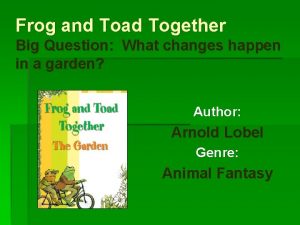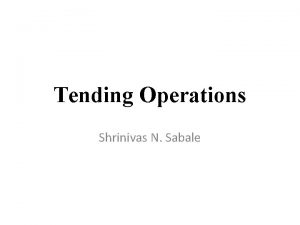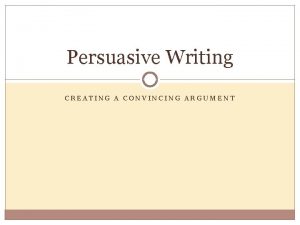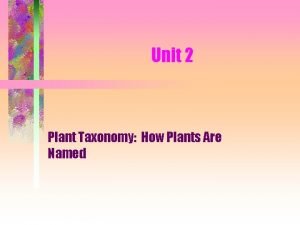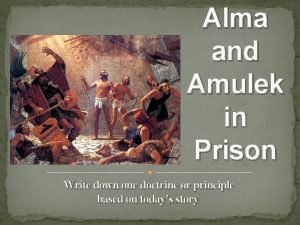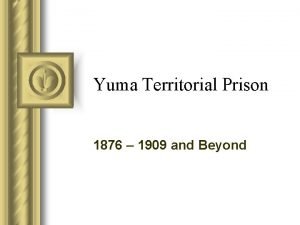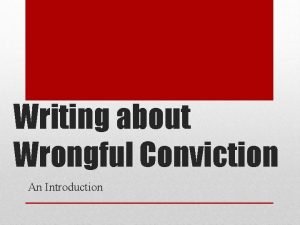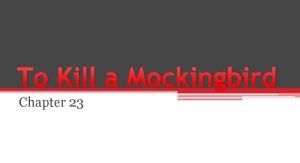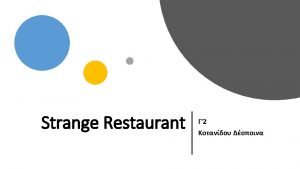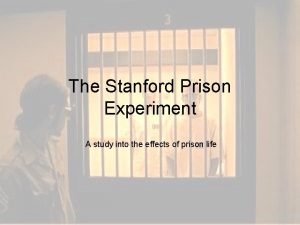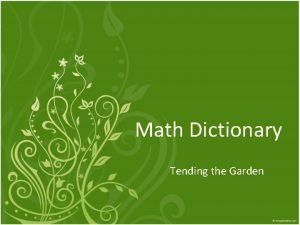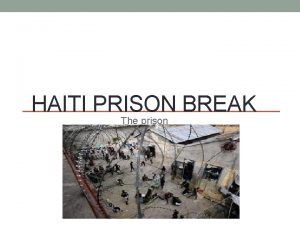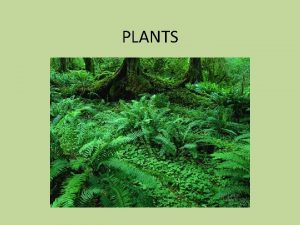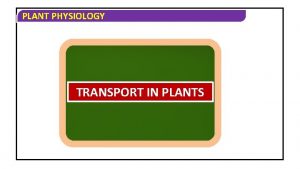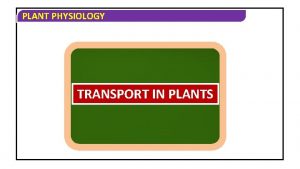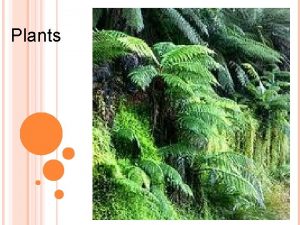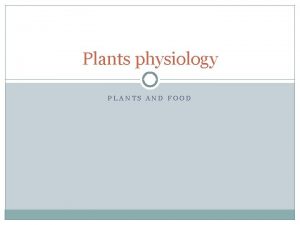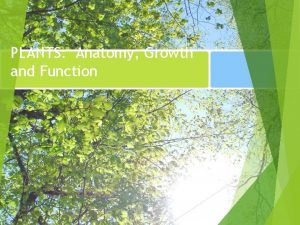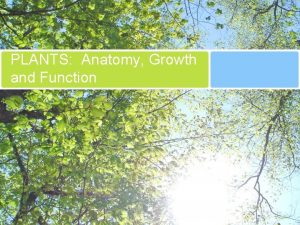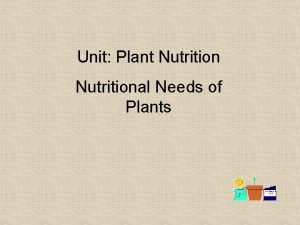Tending the prison garden following plants and plant













![Framing the prison garden Haraway, Staying with the Trouble, 2016 “We live in […] Framing the prison garden Haraway, Staying with the Trouble, 2016 “We live in […]](https://slidetodoc.com/presentation_image_h/921cd92fea58d986926735aea57fb7c4/image-14.jpg)







- Slides: 21

Tending the prison garden: following plants and plant knowledge in and out of prisons Elizabeth Lara, Ph. D candidate Supervisors A/Prof. Eben Kirksey and Dr Bree Carlton Anthropology, Deakin University, Melbourne



Benfield, R. W. (2013). Garden Tourism (Revised ed. edition). Boston: CABI.

Carceral-horticultural interfaces Gibson and Ellis, “Human and plant interfaces: relationality, knowledge and practices, ” 2018 “…plants are situated in a network of ecologies, sites, practitioners, philosophies and practices of knowledge making. ” “A range of effects and affects emanate from the vegetal world: many of them are misrecognised, unacknowledged or simply explained away as mere metaphor. ” (76)

Carceral-horticultural interfaces Prison gardens Post-release gardens Prison museum gardens Garden-art projects with carcerality as their subject Solitary Gardens, Les Fleurs Maudites

Moore, E. O. (1981). A prison environment’s effect on health care service demands. Journal of Environmental Systems, 11, 17– 34.

Moore, E. O. (1981). A prison environment’s effect on health care service demands. Journal of Environmental Systems, 11, 17– 34.

Jewkes, Y. , & Moran, D. (2015). The paradox of the ‘green’ prison: Sustaining the environment or sustaining the penal complex? Theoretical Criminology, 19(4), 451– 469. Jewkes, Y. (2018). Just design: Healthy prisons and the architecture of hope. Australian & New Zealand Journal of Criminology, 51(3), 319– 338.

How are prison gardens and post-release gardens are being imagined, understood, and brought into being? What flows of knowledge, lifeforms, and materials are involved in the realization, maintenance, and production plans of prison gardens and post-release gardens?

Norms and objectives Concerns, interests and experiences Words and behaviors Knowledge of plants and gardens Living and non-living material

Framing the prison garden

Framing the prison garden Deleuze and Guattari, On the Line, 1983 Fundamentally relational Deterritorialization, Reterritorialization, the Rhizome, and Becoming “The orchid is deterritorialized by forming an image, an exact tracing of the wasp; but the wasp reterritorializes itself onto this image. The wasp is deterritorialized, however, by becoming part of the orchid’s reproductive apparatus, but it reterritorializes the orchid by transporting its pollen. […]” Here we see “the becoming-orchid of the wasp, the becoming-wasp of the orchid – […] the two becomings intertwining and relaying each other in a circulation of intensities that always pushed the deterritorialization further along. ” (19 -20)
![Framing the prison garden Haraway Staying with the Trouble 2016 We live in Framing the prison garden Haraway, Staying with the Trouble, 2016 “We live in […]](https://slidetodoc.com/presentation_image_h/921cd92fea58d986926735aea57fb7c4/image-14.jpg)
Framing the prison garden Haraway, Staying with the Trouble, 2016 “We live in […] troubling and turbid times. The task is to become capable, with each other in all of our bumptious kinds, of response. […] The task is to make kin in lines of inventive connection as a practice of learning to live and die well with each other in a thick present. Our task is to make trouble, to stir up potent response to devastating events, as well as to settle troubled waters and rebuild quiet places. […] In fact, staying with the trouble requires learning to be truly present, not as a vanishing pivot between awful or edenic pasts and apocalyptic or salvific futures, but as mortal critters entwined in myriad unfinished configurations of places, times, matters, meanings. ” (1) A position beyond “a comic faith in technofixes” or “a position that the game is over” (3)

Framing the prison garden Tsing et al. , Arts of Living on a Damaged Planet, 2017 Prisons as landscapes in ruin and as producing ruination “How can we best use our research to stem the tide of ruination? ” (1) “…we approach this problem by showing readers how to pay better attention to overlaid arrangements of human and nonhuman living spaces, which we call “landscapes. ” (1) “We must wander through landscapes, where assemblages of the dead gather together with the living. In their juxtapositions, we see livability anew. ” (5)

Framing the prison garden Gagliano et al. , The Language of Plants: Science, Philosophy, Literature, 2017 Critical plant studies An emerging field which offers “a broad framework for reevaluating plants, their representations, and human-plant interactions” and involves the synthesis of “principles of ethics, aesthetics, poetics, agency, cognition, intentionality, communication, and language” (xvi).

Multispecies ethnography (Kirksey and Helmreich 2010) synthesize bodies of knowledge, field approaches, creative practices, and processes of analysis that are directly concerned with the lives and deaths of various organisms ( do the collaborative, political, ethical, environmental work of decentering the human through the questions we ask, the tools we use, and the stories we tell (Swanson 2017, 95)

Multispecies ethnography (Kirksey and Helmreich 2010) Using the stuff of the garden to elicit data about plants, knowledge of plants, and plant practices (Gibson 2018) Becoming a gardener alongside other gardeners (

Challenges Using the typically disparate fields of carceral studies and multispecies studies to learn more about the strengths and weaknesses of each The non-human?


Thank you! elara@deakin. edu. au
 Frog and toad plant a garden
Frog and toad plant a garden What is tending operation
What is tending operation Characteristics of non flowering plants
Characteristics of non flowering plants Tending to persuade
Tending to persuade What non vascular plants
What non vascular plants Nonvascular plant diagram
Nonvascular plant diagram Photosynthesis equation
Photosynthesis equation Tronsmo plant pathology and plant diseases download
Tronsmo plant pathology and plant diseases download Tronsmo plant pathology and plant diseases download
Tronsmo plant pathology and plant diseases download Albugo eye
Albugo eye How plants are named
How plants are named Alma and amulek in prison
Alma and amulek in prison Define plant breeding
Define plant breeding Taichum
Taichum Plant introduction in plant breeding
Plant introduction in plant breeding Yuma territorial prison dark cell
Yuma territorial prison dark cell Sollentuna prison sweden
Sollentuna prison sweden Where is enfield prison farm said to be in chapter 23?
Where is enfield prison farm said to be in chapter 23? Devil island prison restaurant
Devil island prison restaurant Stanford prison experiment research design
Stanford prison experiment research design Scarlet letter prison door
Scarlet letter prison door Dennis challeen prison poem
Dennis challeen prison poem
